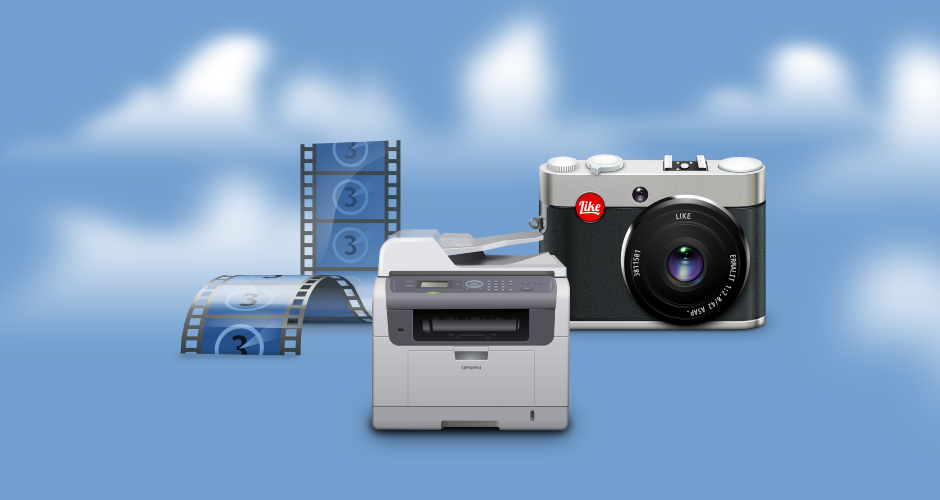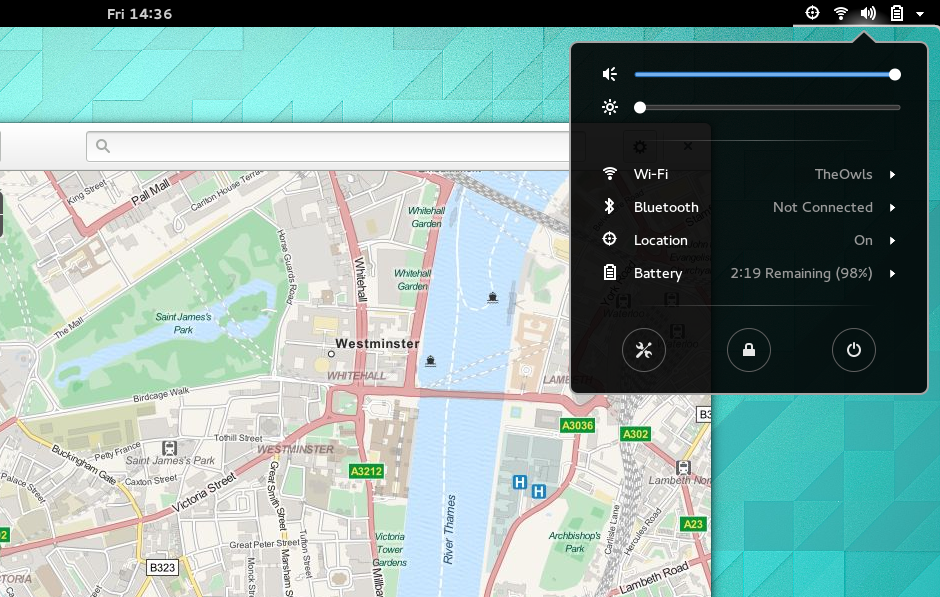The latest GNOME release includes other new features and improvements to the core GNOME 3 user experience.

The drive to integrate GNOME 3 with cloud services continues in 3.12. One major new feature for this release is the introduction of Google Cloud Print integration. This allows you to print from GNOME to printers that are connected to the Google Cloud Print service. It also allows you to add documents to Google Drive. These options can be found in the standard GNOME print dialog, and are available when a Google account has been set up in the Online Accounts settings.
Other additions to cloud integration for 3.12 include:
Pocket integration has been added to Videos, so that you can watch videos stored in your Pocket account with the GNOME video player.
Photos now features Facebook integration, so that you can browse your Facebook photos alongside other photo sources.
In Settings, it is now possible to select images from your Flickr account to use as a background wallpaper.

GNOME 3.12 introduces a new interface element, called popovers. These overlaid bubbles are highly flexible and allow effective interface designs for many common tasks. They also lend themselves to imaginative and engaging design solutions. Popovers are used in a number of places in 3.12, and will become increasingly common in future versions.

GNOME's initial setup assistant, which helps you get set up when you first run GNOME, has had a facelift for 3.12. Based on usability research funded by the Intel Open Source Technology Center, every step of the initial setup process has been updated to make it easier and friendlier to use. Improvements include separate steps for selecting a language and region, a larger map for selecting a time zone, the ability to select an avatar for your user account, and improved graphics throughout.

GNOME's new geolocation framework was first introduced in the previous release. Since then it has received a number of updates. Cell tower positioning, GPS and nearby Wi-Fi access points have been added as methods for determining location (GPS is only supported when built into a 3G modem), making positioning more accurate.
Geolocation feedback and controls have also been added for 3.12. An icon is now displayed in the top bar when an application is using location services, and geolocation controls have also been added to the system status menu. More detailed privacy controls are planned for the future.
Wi-Fi positioning utilizes the Mozilla Location Service, which means that you can help to improve accuracy with the MozStumbler Android app on your phone.

Wayland is the next generation technology for display and input on GNU/Linux. It will deliver improved graphics and overcome limitations of existing display technologies. It will also lay the basis for more secure applications.
Initial experimental Wayland support was introduced in 3.10. Since then, a huge amount of progress has been made. New functionality has been added for logging in and input handling, and stability and compatibility with older X11 applications have been improved.
If you are a developer or early adopter, you can test the latest Wayland work: see the developer notes for more details. Continued progress on the road to Wayland is planned for the next GNOME release.

Tabs have had a design refresh for 3.12. The new visual style works more harmoniously in a variety of contexts, such as when tab content has varied background colors, or when tabs are embedded in other widgets. They also make the most of the screen space available, and the new style offers clear visual hints about the ability to drag tabs.

GNOME 3.12 includes new Bluetooth settings. Redesigned from scratch, the new settings have been simplified to make them easier to use. Instead of requiring the user to use a separate switch to make their device discoverable, or to press a button to add a new device, the panel automatically discovers available devices. This means that pairing a new device is simply a matter of clicking on the device once it has been automatically discovered.
The new Bluetooth settings also include new, redesigned properties dialogs for Bluetooth devices.
There are many other smaller enhancements to the core user experience for 3.12. These include:
Several technical improvements result in faster startup times.
An updated symbolic icon theme, with many improved icons.
Visual theme refinements, including smoother separators by window close buttons, improved backgrounds for pressed buttons, and more attractive floating toolbars.
Improved animations: several transitions have been animated for 3.12, the startup zoom animation has been refined, and animations for dragging windows to the screen edge have been greatly improved.
Improved keyboard navigation in the Activities Overview.
The default wallpaper has been updated to use a new style that matches the default lock screen image. Like previous default wallpapers, this one subtly changes appearance over the course of the day.
Accessibility has been improved for links in labels, menus and the color chooser dialog.
Got a comment? Spotted an error? Found the instructions unclear? Send feedback about this page.